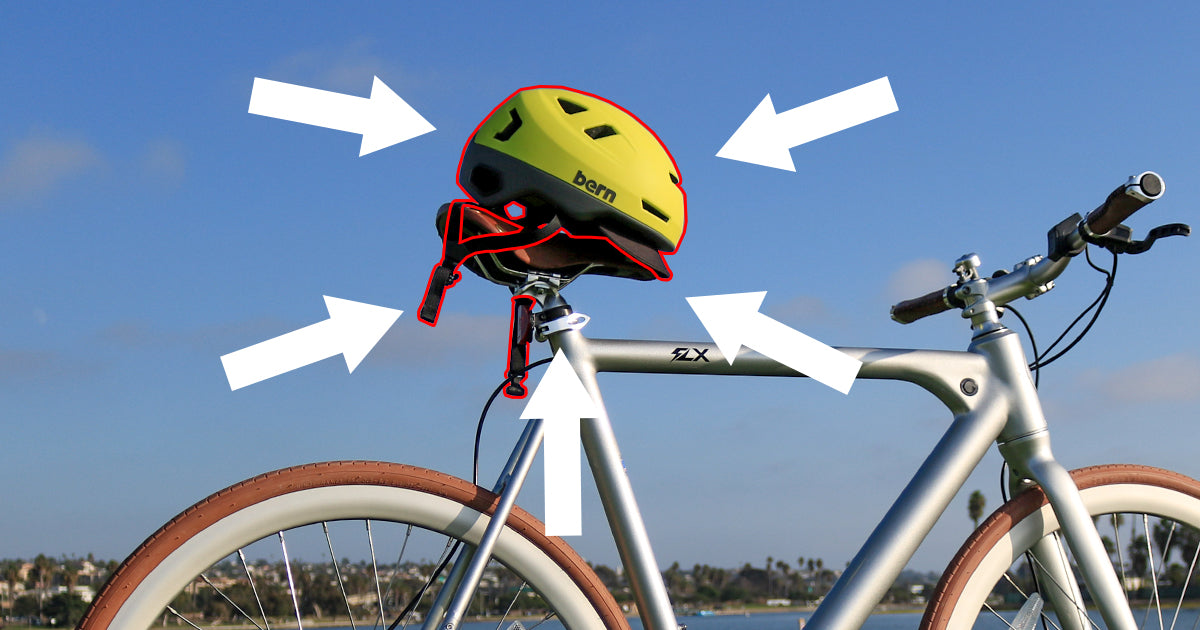Bike helmets are a form of protective gear worn to protect the head from injury while cycling. They are designed to absorb the impact of a fall or collision, reducing the risk of head injury. Here are the basic steps for properly fitting and wearing a bike helmet:
-
Measure your head to determine the correct size of helmet to purchase. You need to measure your heads circumference and will want to wrap the measuring tape starting in the middle of your forehead and just above your eye brows, then around your head above your ears and back around your head to the middle of your forehead where you started. *sizes may vary depending on different companies/brands refer to their brand chart to find the correct size for you
-
Put the helmet on your head and adjust the straps to fit snugly around your ears and chin. The helmet should not be able to move around on your head when you shake it.
-
Adjust the straps so that the helmet sits level on your head and does not tilt forward or backward.
-
Make sure that the helmet is properly fastened. The chin strap should be tight enough that you cannot fit more than two fingers between the strap and your chin.
-
Always wear a helmet while cycling, even if you are going for a short ride or are an experienced rider.
-
Replace your helmet if it is involved in an impact, even if it looks undamaged.
-
Always check the expiration date of the helmet. Most of the helmets have a shelf life of 3-5 years after that it needs to be replaced.
-
Always read the user manual of the helmet before using it.
It is important to note that helmets are not a one-size-fits-all solution, and it's important to choose the appropriate helmet for the specific activity you will be participating in. A bike helmet, for example, will not protect you in the same way as a snow sports helmet or a motorcycle helmet.
According to the National Safety Council, the use of a bicycle helmet can reduce the risk of head injury by as much as 85%. Despite this, many people still choose not to wear a helmet while cycling. It is important to understand that a head injury, even a minor one, can have serious and long-lasting consequences. Wearing a properly fitted and fastened helmet while cycling can greatly reduce the risk of injury, and ultimately save your life.





Share:
How to: Fix a Flat Tire
Tips For Cycling at Night